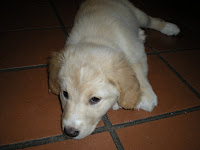If you are thinking about bringing a dog into your family it can be absolutely overwhelming – and that is before your new friend steps one paw inside. Here is a checklist of a few things you may not have thought of to have in place before you bring Puppy home:
- Books – you may think you know how to raise a puppy into a well-behaved, happy dog but a little extra research never hurts. The best comprehensive book for new puppy owners is Puppy’s First Steps by the Faculty at Tufts University Vet School. Another favorite of mine is Perfect Puppy in 7 Days by Dr. Sophia Yin. This is a fun read with lots of pictures and step-by-step instructions. Finally my new favorite book on dogs is the just released Decoding Your Dog by the American College of Veterinary Behaviorists. I think that ALL dog owners should read this book to help strengthen the relationship between you and your dog.
- A crate – In addition to the actual crate, you also need an understanding of how crate training works and why it is so important to housetraining your new dog. You want a crate that is small enough so your dog can’t sleep in one corner and eliminate in another. If your puppy is going to grow the crate will often come with a divider to help customize the size. You also want a cozy bed to go into the crate to keep Puppy comfortable.
- A plan – The first three months of a dog’s life are called the critical socialization period. This is where sociability outweighs fear and is the best time to get your puppy to adapt to new people, places and other dogs. If puppies are not properly socialized this can lead to behavior problems down the road. You don’t want to head off to the dog park as you won’t know the health status of the dogs there and your puppy could be exposed to dangerous diseases and icky parasites. Instead, find a puppy class to attend as soon as you can to help get your dog started off on the right paw. For more information on this please read the AVSAB Position Statement.
- Puppy food – You need a food that is designed for growing puppies. If you have a large breed puppy it is important to feed a large breed puppy food to ensure that the balance of nutrients is appropriate. Many of the dog foods out there are actually dangerous, with super high protein levels and calcium phosphorus ratios that result in rapid bone growth. When Puppy’s bones grow faster than they should, joint development is altered resulting in arthritis down the road.
- Toys – This is the fun part! Puppy should have a variety of toys to satisfy his need to chew as well as stimulate his mind. A Kong is essential for any dog as it is the only toy I would feel comfortable leaving alone with puppy in the crate. Plush toys and those made of softer rubber can be easily chewed up and swallowed resulting in an intestinal obstruction. You want to stuff the Kong with tasty treats and put it in the crate with puppy when you leave so he will associate the crate with happy things. When you are home and can supervise Puppy’s playing my favorite toys are those that make him think a bit. Two of the best are the BusyBuddy Waggle or Starmark Treat Dispensing Chew Ball.
Interested in more puppy information? Visit www.politepuppy.com for all your puppy questions.






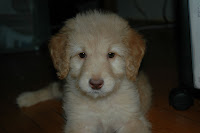



 I touched on nutrition and the importance of feeding one's dog a high quality food appropriate for their dog's lifestyle. What owners need to be aware of is that many of the boutique brands of dog food are formulated to be "all life stage diets" which essentially means it is puppy food. Many people feed these high calorie diets to their couch potato dogs and are confused when they start to gain weight. We also discussed the pros and cons of
I touched on nutrition and the importance of feeding one's dog a high quality food appropriate for their dog's lifestyle. What owners need to be aware of is that many of the boutique brands of dog food are formulated to be "all life stage diets" which essentially means it is puppy food. Many people feed these high calorie diets to their couch potato dogs and are confused when they start to gain weight. We also discussed the pros and cons of  Finally I went over toys I like such as the Kong and how chewing on a tennis ball will ruin your dogs teeth. The puppies were definitely exhausted when they left and I hope the owners took away some helpful tips on keeping their new family members happy and healthy. The next Polite Puppy Class will be Sunday, May 23rd.
Finally I went over toys I like such as the Kong and how chewing on a tennis ball will ruin your dogs teeth. The puppies were definitely exhausted when they left and I hope the owners took away some helpful tips on keeping their new family members happy and healthy. The next Polite Puppy Class will be Sunday, May 23rd.

 Millan’s training revolves around what known as dominance theory. According to this school of thought, you must establish yourself as the “alpha dog” while keeping your dog in a submissive role. A central theme of this training technique is that dogs that are fearful or aggressive are trying to obtain dominance over their owners or other pets in the house and must be put in their place, often times using force.
Millan’s training revolves around what known as dominance theory. According to this school of thought, you must establish yourself as the “alpha dog” while keeping your dog in a submissive role. A central theme of this training technique is that dogs that are fearful or aggressive are trying to obtain dominance over their owners or other pets in the house and must be put in their place, often times using force. Here’s the main problem I see with dominance theory: maintaining your alpha-dog status requires that you routinely behave in a threatening manner – often using physical force--to those submissive to you. And so you must ask yourself: Is that the kind of relationship you really want to create? It’s certainly not one I want to share with my dogs.
Here’s the main problem I see with dominance theory: maintaining your alpha-dog status requires that you routinely behave in a threatening manner – often using physical force--to those submissive to you. And so you must ask yourself: Is that the kind of relationship you really want to create? It’s certainly not one I want to share with my dogs.
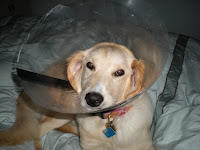
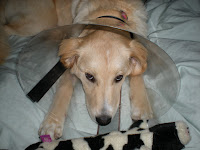

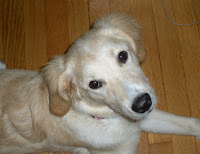


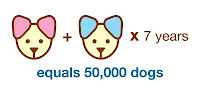 If the reasons above do not move you, let us consider the tragic pet overpopulation problem in this country. The Humane Society of the Unites States estimates that 6-8 million dogs and cats enter a shelter every year. Of that number over half are euthanized, that is 4 million dogs and cats put to death every year. The average fertile female cat can produce about 12-18 kittens per year and female dog 12-20 puppies. Shelters and rescue groups work tirelessly to find homes for these pets but they just can’t keep up with the number of animals entering the shelters.
If the reasons above do not move you, let us consider the tragic pet overpopulation problem in this country. The Humane Society of the Unites States estimates that 6-8 million dogs and cats enter a shelter every year. Of that number over half are euthanized, that is 4 million dogs and cats put to death every year. The average fertile female cat can produce about 12-18 kittens per year and female dog 12-20 puppies. Shelters and rescue groups work tirelessly to find homes for these pets but they just can’t keep up with the number of animals entering the shelters. 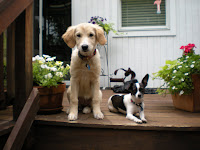
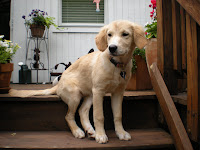
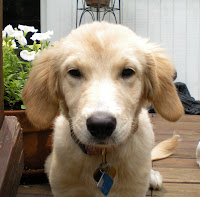
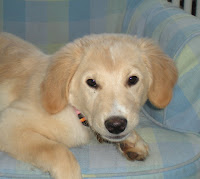
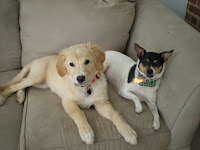
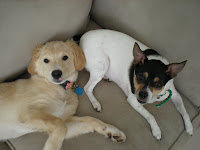
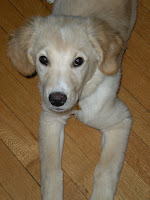
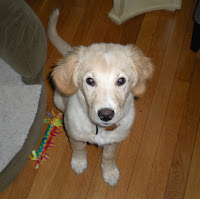 Poppy’s littermates were not vaccinated or treated at Friendship, but from what I was told they developed extreme lethargy, decreased appetite, high fever and joint pain. The joint pain is a somewhat unusual presentation for a vaccine reaction but what I believe happened is that for some unknown reason the puppies’ immune system created an inflammatory response to the vaccine which resulted in localization of immune complexes in the joints causing pain. They were treated with a non-steroidal anti-inflammatory such as Rimadyl, as well as Doxycycline, in case the illness was related to an infectious disease. While Doxycycline is an antibiotic, it also has anti-inflammatory properties which would help make the puppies feel better.
Poppy’s littermates were not vaccinated or treated at Friendship, but from what I was told they developed extreme lethargy, decreased appetite, high fever and joint pain. The joint pain is a somewhat unusual presentation for a vaccine reaction but what I believe happened is that for some unknown reason the puppies’ immune system created an inflammatory response to the vaccine which resulted in localization of immune complexes in the joints causing pain. They were treated with a non-steroidal anti-inflammatory such as Rimadyl, as well as Doxycycline, in case the illness was related to an infectious disease. While Doxycycline is an antibiotic, it also has anti-inflammatory properties which would help make the puppies feel better.



 I spend time working with Poppy every day and incorporate the training methods into daily activities. For example, before she gets her dinner she must sit, wait for me to place it down and then call her. Before I put her leash on she must sit calmly and allow me to attach the leash before we go anywhere. Performing activities such as these shows her how to behave appropriately and not act like a wild thing. This is something Poppy and I work hard on and while she is very bright we have setbacks and I have to constantly remember to take time to teach her correctly. Next week we will cover the remaining three basic commands for a well behaved puppy.
I spend time working with Poppy every day and incorporate the training methods into daily activities. For example, before she gets her dinner she must sit, wait for me to place it down and then call her. Before I put her leash on she must sit calmly and allow me to attach the leash before we go anywhere. Performing activities such as these shows her how to behave appropriately and not act like a wild thing. This is something Poppy and I work hard on and while she is very bright we have setbacks and I have to constantly remember to take time to teach her correctly. Next week we will cover the remaining three basic commands for a well behaved puppy.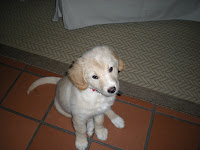
 Each time before I put Poppy in the crate and immediately when I let her out, I take her outside so she can go to the bathroom. Instinctively most dogs will not urinate or defecate in the same space they sleep in, thus she should “hold it” while in the crate. When Poppy goes to the bathroom outside I lavish her with praise—as if this was the best thing in the world she could possibly have done! This seems to be enough for Poppy, but for some dog owners using a small treat as a reward works well too.
Each time before I put Poppy in the crate and immediately when I let her out, I take her outside so she can go to the bathroom. Instinctively most dogs will not urinate or defecate in the same space they sleep in, thus she should “hold it” while in the crate. When Poppy goes to the bathroom outside I lavish her with praise—as if this was the best thing in the world she could possibly have done! This seems to be enough for Poppy, but for some dog owners using a small treat as a reward works well too.